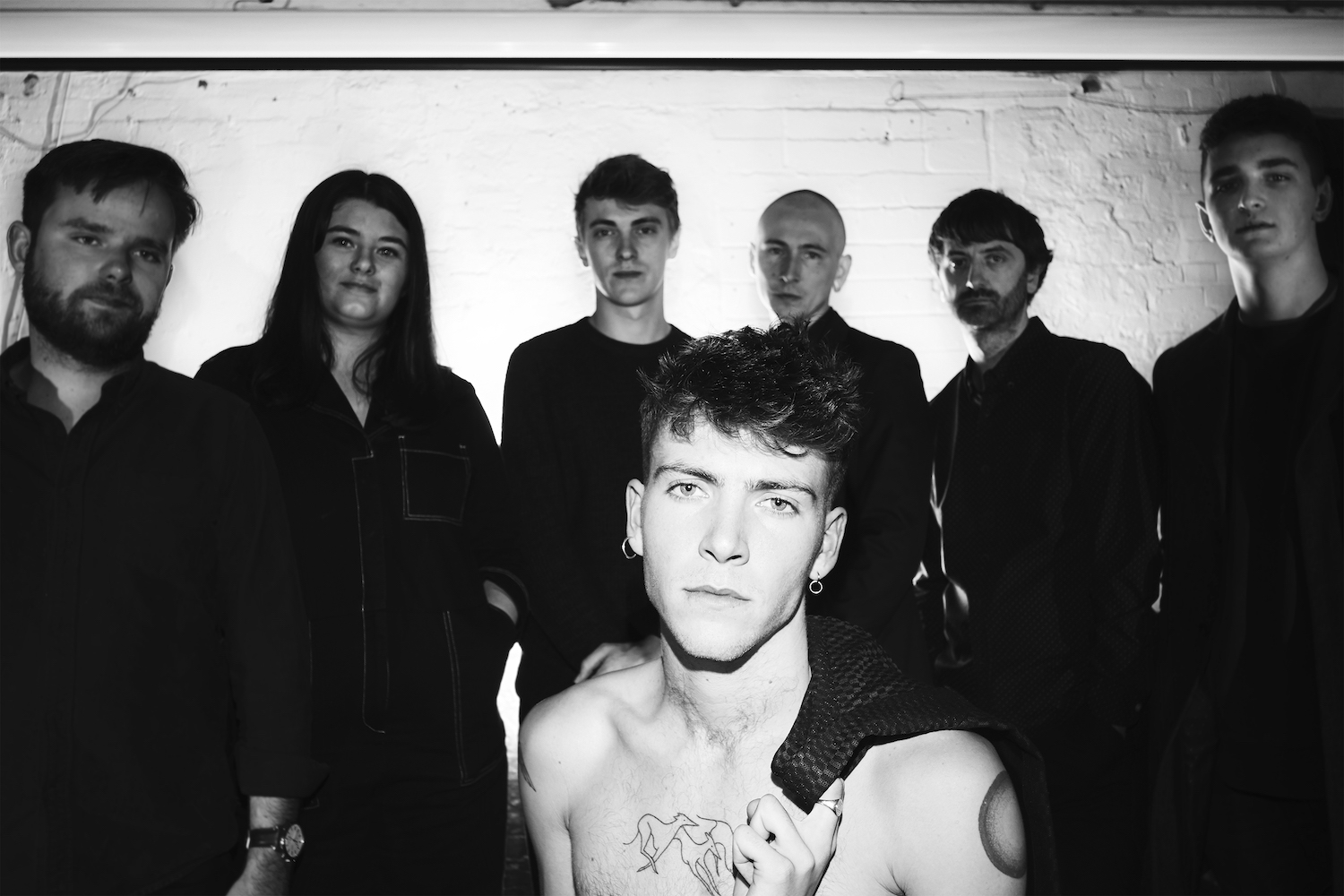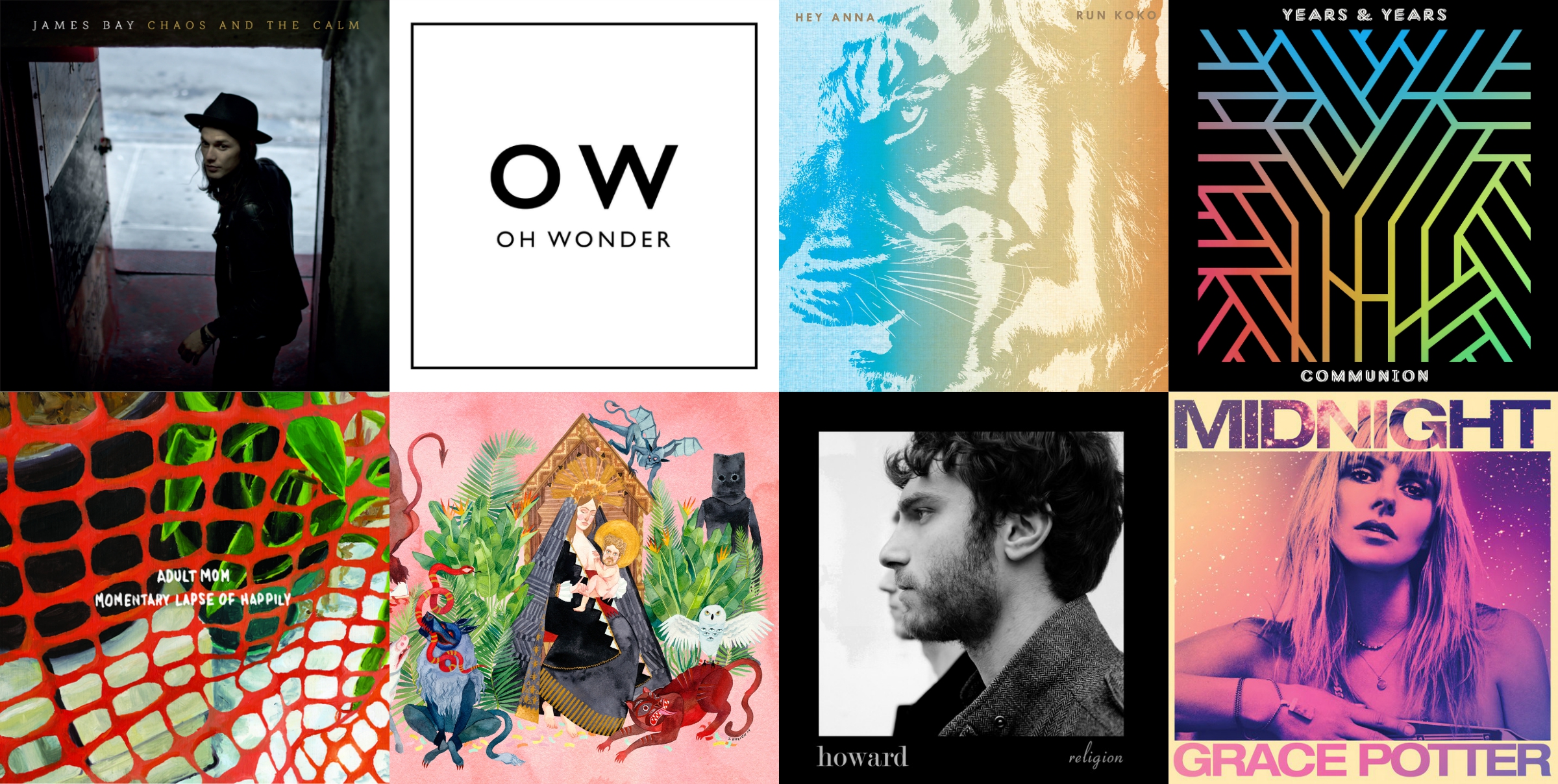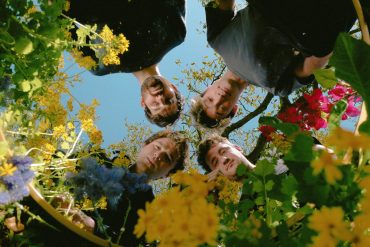New York-based artist Nisa’s debut EP, ‘Guilt Trip,’ wades through the deep end of anxiety with energy, resilience, and sharp, nuanced words.
•• •• •• ••
The process of self-acceptance is rarely simple or straightforward, yet what is tumultuous can also be beautiful. An example of such beauty in chaos is New York-based artist Nisa’s debut EP, Guilt Trip. Released independently on March 26, 2021, Guilt Trip is seven songs that wade through the deep end of anxiety with energy, resilience, and sharp, nuanced words.

After living in London and traveling around Europe for a year, Nisa found herself back in New York, stuck in her room as the pandemic settled in. Thanks to a flurry of changes and ample unanticipated time, the process of reworking demos and writing what would become Guilt Trip began. From the high-energy openers like “Ferris Wheel” and “Common Denominator” to the bold frenzy of closing track, “Jockey,” Nisa somehow seems to untangle the messiness of life for the duration, each song a song you can get lost in.
Recently, Atwood Magazine had the opportunity to speak with Nisa all about the experience of making Guilt Trip, her love for PJ Harvey, the peace that can come from asking questions without getting answers, and what 2021 might have in store. Read about it in our conversation below.
— —
Listen: ‘Guilt Trip’ – Nisa
A CONVERSATION WITH NISA

Atwood Magazine: You started to work on Guilt Trip right before the pandemic set in, right?
Nisa: Just about, yeah. The inception was in March, right around when we realized that the pandemic was a real thing rather than just a week or two. That’s when I really went into the work mode of [realizing] I was going to have the time to do this. And that set into a few month’s worth of cultivating some of the demos that started when I was living in London the fall before.
Now releasing it a year later, were there ways the abnormality of this past year shaped the way Guilt Trip turned out?
Nisa: I think maybe the most pervasive element of the way the year panned out in the record was a sense of anxiety. I had this restlessness that I didn’t expect to feel coming back from travel. The year before I had been traveling around Europe, and had gone to school in London for a bit, and then coming home to New York, I didn’t expect the songs to be so hectic, so filled with buzzing energy; this desire to want to kind of burst is what ended up happening.
Songs like “Common Denominator” started out as acoustic ballads, and they ended up being some surf-rock kind of Pixies energy. I think that was all a result of being in my room for three months and thinking about what I wish I was doing, which was playing live, and the songs transformed into this projection of what I never thought they would be.
I was going to ask about that as well. Listening to the first singles you released in 2020, all the songs on Guilt Trip are so sonically different. Was that shift in sound a conscious thing or do you think it stemmed from being in your room for a long time?
Nisa: I think it’s a mix of both. The producer I worked with on this project, who’s a close collaborator of mine, Ronnie Di Simone, had a similar thought when I brought the demos in about how different everything was beginning to sound. Over the summer, [the songs] went through some iterations, and I think definitely the time, and the impact of seeing the way the year was panning out and feeling a bit more hopeless about that, and launching the artist project in July [had an effect.]
The time kind of pushed against this idea, or community, in sound, and the songs all became these worlds. I think “Bottom Feeder,” “Common Denominator,” and “Ferris Wheel” encapsulate the higher energy sound. Those are the songs that I wrote first, and I think as I went on, the toll the year was taking and a couple of the changes I was going through, developing anxiety for the first time and learning to deal with that, is where “Turn Me Down” and “Drawn Out” came from.
Watch: “Turn Me Down” – Nisa
The songwriting throughout Guilt Trip is so sharp and nuanced; what were some of your major influences -- whether it be music, books, places, people -- while writing this record?
Nisa: I think the biggest influence in probably most of my work right now is PJ Harvey. Apart from her being a huge idol of mine, I was listening to Stories from the City, Stories from the Sea especially, and thinking about that narrative of being between two worlds, which for her were New York and London. I kind of took from there to talk about that almost journalistic sense of being exposed to a new place and having it become your own. And then the homecoming, and how that impacts how different homes can feel, how alien. With the added layer, the pandemic, and seeing New York in a way I’ve never seen it before, it almost felt necessary to account for that and the way that I ended up feeling. As a result, I think “Growing Pains” was a reflection on how I felt last year as a person, as someone in a relationship, outgrowing that and then outgrowing so many of the feelings that were keeping me tethered to that part of my life.
I really love ‘’Turn Me Down;’’ it feels like there’s an edge throughout the song, hinging on staying or going. What was the thought behind doing an animated video to accompany the song?
Nisa: The animated video was actually an idea I had for quite a while, but I wasn’t sure which song I wanted it to be for. But as “Turn Me Down” came to be, I realized that what it was closer to was a form of escapism. I couldn’t ever imagine myself ever saying to a person, “You can stay and I’ll leave,” so I think I tapped into this element of animation and the imaginary world of wanting to escape something like a social situation, like a party, and having it happen in your head rather than really having to go through it. And the artist who worked on it, James McManus, had this amazing vision I thought was really cool in relation to Studio Ghibli films, which I love a lot. So it just ended up being this fusion of what I felt the song to be and what he thought it could look like in a visual form.
Guilt Trip ends with the song ‘’Jockey,’’ which might be the song that struck me the most. Can you tell me a little about how that track came together?
Nisa: “Jockey” was the last song. I kind of sandwiched it into the record last minute because I wrote it in this fifteen-minute burst of feeling insignificant and trying to convince myself and others of the opposite. There’s this desperation to it, about, you know, being jockeyed around by something or someone, and being on a path that might not really feel like it fits, but at the same time, really not knowing how to pull yourself out of that hole. And writing it, it kind of culminates into this giant orchestral mess, which we were looking to do to end the record with. I think the chaos of it gave me this eye of the hurricane vision, where after having written it I felt a lot better. And really it distills down to this idea of, I went to college having this idea of studying English, loving the work but not really wanting to go down that path as a career. And so it came at this fork between choosing to do music full time, and choosing to maybe teach, or go on to grad school, and “Jockey” is the result of that. And I think it’s summed up the year as well, just really feeling insignificant and realizing that this stillness is something that we’ll all experience, and learn to move through the motions.
I totally agree that it encapsulates this last year. The last lyrics of ‘’Jockey’’ are questions, ‘’Will I ever get the chance to change? Is it normal?’’ As time has passed, have you still been asking those questions? Or have you found an acceptance in not knowing?
Nisa: I think I’ve found reassurance in all of the questions and the fact that I might not ever get those answers. Maybe change is something that is constantly happening and I won’t realize it until it’s retroactive and I look back. As I work on new music I’ve realized I’m already changing, and my sound is coming to be something very different by each project. And I think that, in the nascent sense, encapsulates the idea that I think I will change, and if I don’t harp on the question for too long, I’ll see it over time. But there’s reassurance in not knowing, and there’s reassurance in the collective unknown. No one knows, so why should I be the only one to worry about it.

Yeah, there’s a peace in ending with a question sometimes, to just sit with it. Though I’m sure this changes frequently, at the moment, is there a song on the record you’re most proud of?
Nisa: The song I’m most proud of on the record is “Common Denominator.” It’s a very specific song about a very specific situation, and I had the most trouble writing it because I think being direct with people can be difficult sometimes. But [the song] is about miscommunication, so what I really focused on was clarity, both in the sound and in the lyrical sense. And I think we got there.
Now that Guilt Trip is out in the world, what’s something you hope listeners feel or experience when they hear it in full?
Nisa: I hope that the record somehow reflects this journey towards accepting yourself and [all] the iterations of yourself, especially as times become more difficult. Knowing that going through lows, and feeling anxious, and wanting change in this turbulence the past year has brought along, is only one aspect of a multifaceted experience. And I hope that [the journey is] a rollercoaster that feels justified, even if it isn’t the best thing to go through.
That’s so good. With your debut release and the possibility of playing shows in reach, what might be in store for you in 2021?
Nisa: I hope to play shows soon, I could see a tour sometime in the fall. But currently, I’ve just finished working on a second EP, and then in between projects I’ve been shifting towards this album mindset, a collection of songs that I’ve written throughout the year as reflections of the time. So I’ve been writing a lot, but I hope to also be performing by the summer. Whenever it’s safe, I hope to play live again.
— —

Connect to Nisa on
Facebook, Instagram, Twitter
Discover new music on Atwood Magazine
? © Sara Laufer








